Clonal replacement of tumor-specific T cells following PD-1 blockade
- PMID: 31359002
- PMCID: PMC6689255
- DOI: 10.1038/s41591-019-0522-3
Clonal replacement of tumor-specific T cells following PD-1 blockade
Abstract
Immunotherapies that block inhibitory checkpoint receptors on T cells have transformed the clinical care of patients with cancer1. However, whether the T cell response to checkpoint blockade relies on reinvigoration of pre-existing tumor-infiltrating lymphocytes or on recruitment of novel T cells remains unclear2-4. Here we performed paired single-cell RNA and T cell receptor sequencing on 79,046 cells from site-matched tumors from patients with basal or squamous cell carcinoma before and after anti-PD-1 therapy. Tracking T cell receptor clones and transcriptional phenotypes revealed coupling of tumor recognition, clonal expansion and T cell dysfunction marked by clonal expansion of CD8+CD39+ T cells, which co-expressed markers of chronic T cell activation and exhaustion. However, the expansion of T cell clones did not derive from pre-existing tumor-infiltrating T lymphocytes; instead, the expanded clones consisted of novel clonotypes that had not previously been observed in the same tumor. Clonal replacement of T cells was preferentially observed in exhausted CD8+ T cells and evident in patients with basal or squamous cell carcinoma. These results demonstrate that pre-existing tumor-specific T cells may have limited reinvigoration capacity, and that the T cell response to checkpoint blockade derives from a distinct repertoire of T cell clones that may have just recently entered the tumor.
Conflict of interest statement
Competing Interests
H.Y.C. is a co-founder of Accent Therapeutics and an advisor for 10x Genomics and Spring Discovery. A. L. S. C. was an advisory board member and clinical investigator for studies sponsored by Merck, Regeneron, Novartis, Galderma, Genentech Roche. A.T.S. and D.K.W. are advisors for Immunai.
Figures
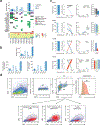
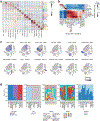
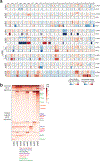



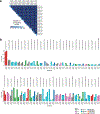
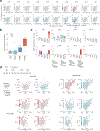






Comment in
-
T cells pass on the baton during checkpoint inhibition.Nat Rev Cancer. 2019 Oct;19(10):546. doi: 10.1038/s41568-019-0194-9. Nat Rev Cancer. 2019. PMID: 31417201 No abstract available.
-
Recruit or Reboot? How Does Anti-PD-1 Therapy Change Tumor-Infiltrating Lymphocytes?Cancer Cell. 2019 Sep 16;36(3):215-217. doi: 10.1016/j.ccell.2019.08.009. Cancer Cell. 2019. PMID: 31526757
-
New Clones on the Block.Immunity. 2019 Oct 15;51(4):606-608. doi: 10.1016/j.immuni.2019.09.018. Immunity. 2019. PMID: 31618653
References
-
- Sharma P & Allison JP The future of immune checkpoint therapy. Science 348, 56–61 (2015). - PubMed
Publication types
MeSH terms
Substances
Grants and funding
LinkOut - more resources
Full Text Sources
Other Literature Sources
Molecular Biology Databases
Research Materials

